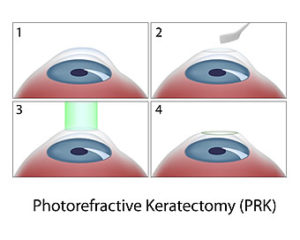OCLI’s own Marguerite McDonald, MD performed the world’s first laser vision correction procedure in Louisiana back in 1988. March 25, 2018 marks the 30th anniversary of this extraordinary advancement in vision correction history.
The world’s very first laser vison correction procedure was performed by OCLI’s own Marguerite McDonald, MD in 1988. Dr. McDonald found herself fascinated by Steve Trokel’s 1983 AJO paper in which he used an industrial excimer laser to make patterns in cadaver animal eyes. So much so that, starting in 1984, Charles Munnerlyn, PhD, Steve Trokel, MD, and Dr. McDonald began working together to develop laser vision correction. Steve Klyce, PhD, was also an important member of the research team.
This team of innovators began their arduous journey, ablating thousands of plastic test blocks before moving on to cadaver animal and human eyes. As they progressed they next performed the procedure on living rabbit and monkey eyes. Through their years of work they were able to refine the hardware, software and surgical technique.
Progress was arduous for the team, but an unexpected opportunity arose in 1988. Alberta Cassady was a 62 year old woman with cancer of the orbit, requiring exenteration, which is essentially the removal of the eyeball and the contents of the eye socket. With a massively disfiguring procedure looming, and a poor prognosis even with the surgery, Mrs. Cassady bravely offered to let the team perform experimental surgery on her eye.
After receiving permission from the Food & Drug Administration, Dr. McDonald had the honor of performing the first laser vision correction procedure in the world, PRK, on Mrs. Cassady on March 25, 1988 at the Delta Primate Center in Covington Louisiana, which was the vivarium used by the LSU Eye Center in New Orleans. The team rushed Mrs. Cassady past the monkey cages, as time was of the essence. Dr McDonald was the surgeon for the procedure. The research team watched her heal on a daily basis, right up until the exenteration 11 days later. The pathology report showed the healing pattern that we now know so well.

Sadly, Mrs. Cassady lost her battle with cancer. Her remarkable bravery and generosity in the face of such tragedy provided vital information that allowed the FDA to accelerate the approval process. Even though it is usually only wealthy donors who have facilities named after them, Dr. McDonald and her team demanded that LSU allow them to name their laser facility after such a brave and selfless woman.
The FDA was so impressed by the daily postop evaluations and histological specimen that they allowed the team to start human trials immediately. Laser vision correction has come far, but it all started with Dr. McDonald and her colleagues, and the selfless act of one brave woman. “Looking back on the procedure we performed on Mrs. Cassady so many years ago, I am so proud and excited to see how far laser vision correction has come,” says Dr. McDonald.
Since that first PRK procedure was performed back in 1988, the original team has contributed to, and still contributes to, significant advances in laser vision correction. PRK has evolved dramatically and is popular all over the world, including the U.S.; in some countries, it is the most popular form of laser vision correction. The most prevalent type of laser vision correction, however, is LASIK, which was introduced after PRK; it is one of the most commonly performed elective surgeries, with more than 28 million procedures performed worldwide. Now, LASIK is most commonly performed using all-laser femtosecond technology. When combined with advanced wavefront, topographic, or customized technology, laser vision correction—both LASIK and PRK— can provide visual results that often surpass 20/20.